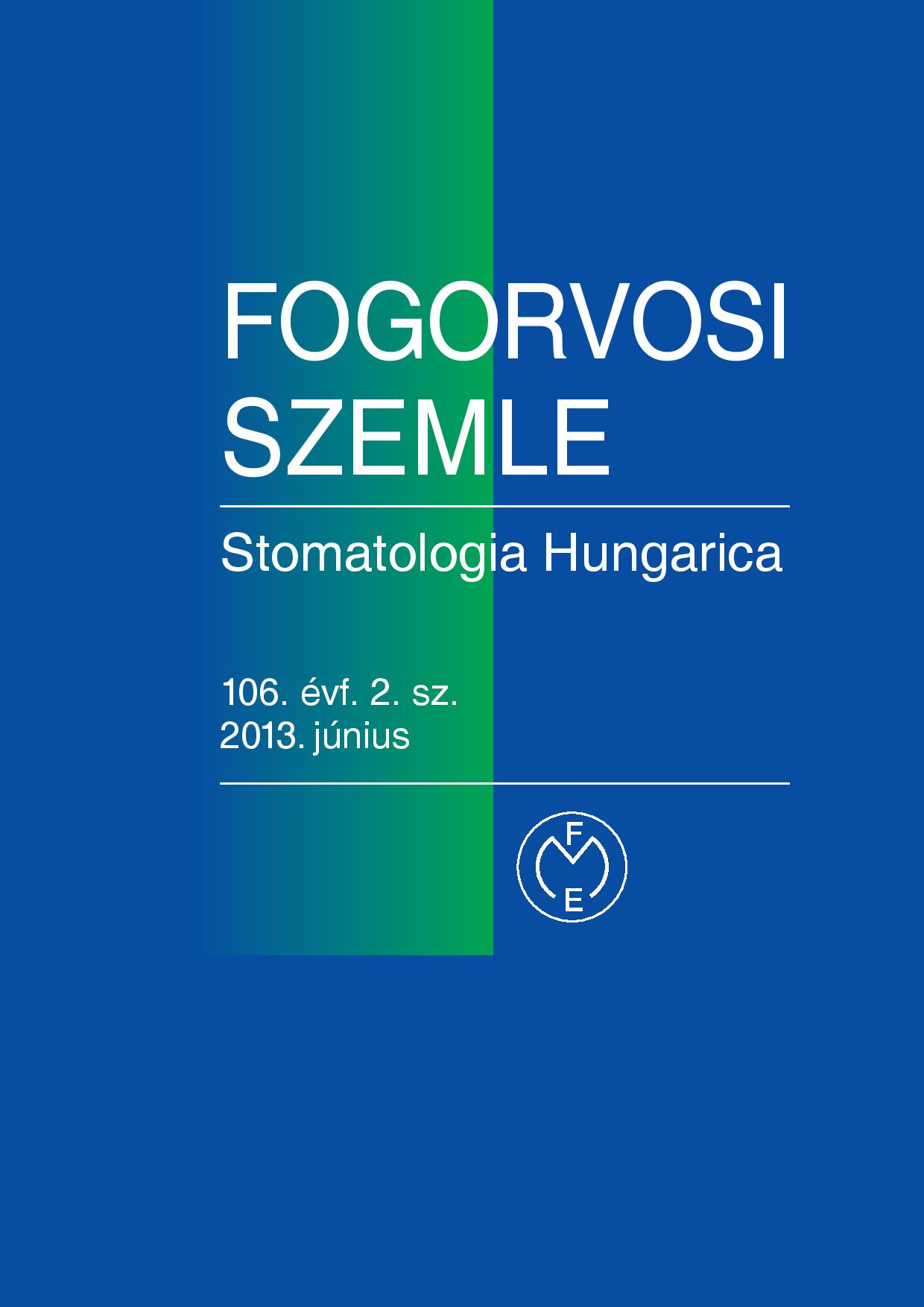Extrém méretű iatrogén eredetű ínyhiperpláziák sebészi korrekciója
Esetsorozat
Absztrakt
Az ínymegnagyobbodás számos irritáló tényező hatására bekövetkező szöveti reakció. Leggyakoribb formája
a gyógyszer okozta ínyhiperplázia, de lehet genetikai hajlam alapján kifejlődő, gyulladás okozta kötőszöveti túlbur-
jánzás, de akár krónikus vagy akut leukémia következménye is, komoly nehézségek elé állítva ezzel a fogorvost.
Rövid általános összefoglalót követően három eset kerül bemutatásra. Az első egy Cyclosporin-A-t szedő, vese-
transzplantált fiatal nőbeteg esete. Az extrém méretű ínyhiperpláziát több lépésben, belső fordított ferde metszések-
kel távolítottak el a szerzők, a sebszéleket matracöltésekkel zárták. A sebgyógyulás zavartalan, a páciens együttműködése pedig mindvégig kiváló volt. A második eset egy 62 éves magas vérnyomásban szenvedő, kalciumcsatorna-blokkolót szedő páciensről szól. Ínymegnagyobbodása annyira súlyos volt, hogy már az ajakzárást is akadályozta. Korrekciója két lépésben, hagyományos gingivectomia és belső fordított ferde metszések kombinációjával történt.
A harmadik eset egy ismeretlen eredetű, hemolítikus anémiában szenvedő 42 éves nőbeteg esetét mutatja be. Súlyos ínyhiperpláziájához jelentős fájdalom és láz is társult. A feltételezett diagnózis leukémia volt, de többszöri negatív hisztológiai leletet követően, altatásban hagyományos gingivectomia történt, azonban a duzzanat és erős fájdalom napokon belül ismét jelentkezett. Kortikoszteroid terápiát követően a páciens állapota rohamosan javult, és folyamatos szteroidszedés mellett (Medrol® 16-32mg) egy év után is stabil a parodontális és hematológiai állapota.
Napjainkban a belső fordított gingivectomiát részesítjük előnyben a hagyományos gingivectomiával szemben, a kiszámíthatóbb gyógyulás és elfogadhatóbb esztétikai eredmények miatt. A kezelés után a gyógyszer okozta ínyhiperplázia kiújulása megakadályozható megfelelő szájhigiéniával, és rendszeres szupportív kezelésekkel. Következtetések: A konzervatív és sebészi parodontális kezelések kombinációja kiszámítható eredményt nyújt még az igen súlyos gyógyszer okozta ínyhiperpláziák esetében is, de nagyon fontos a páciens megfelelő együttműködése, és nem utolsósorban az általános kollégákkal való kooperáció is.
Copyright (c) 2021 Szerzők

This work is licensed under a Creative Commons Attribution 4.0 International License.


.png)




1.png)



